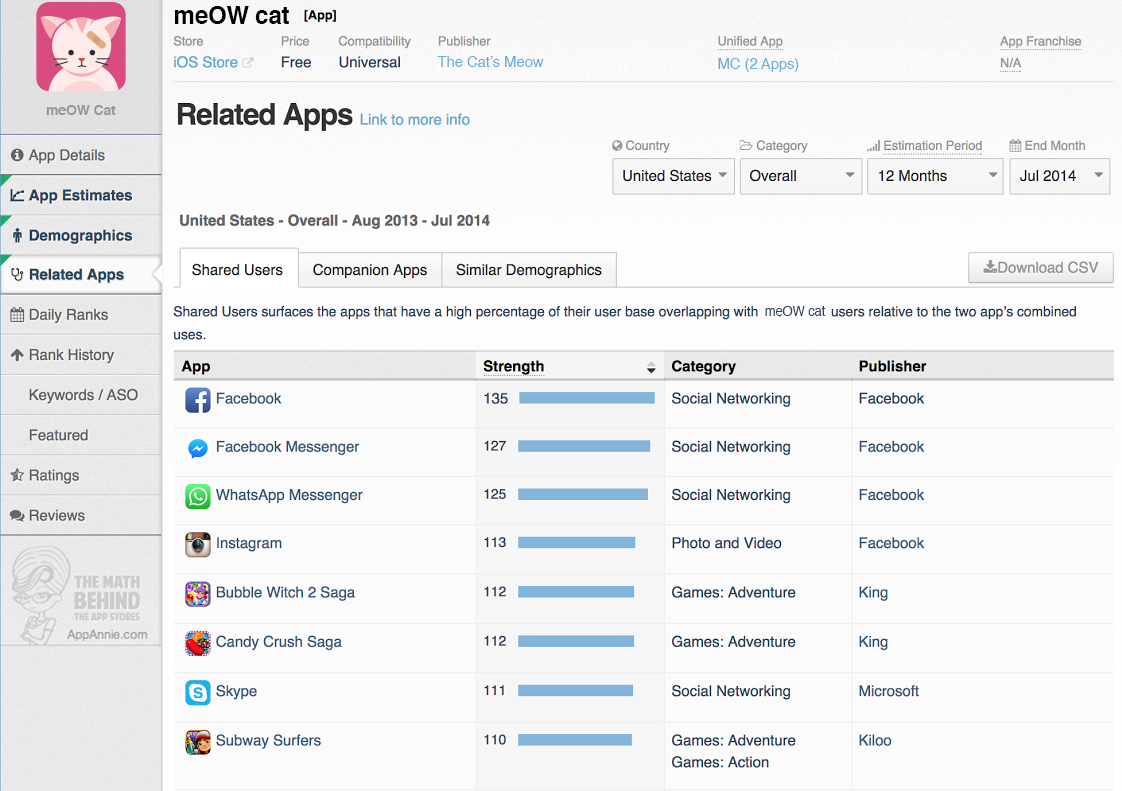7 Intelligent Ways to Promote Your App with Competitive Apps Analysis
Instead of turning a blind eye to the competition, do a little app analysis. Here are 7 intelligent ways to stay ahead of the rest.

Seeking inspiration for your app from everywhere is certainly wise. It’s equally wise to know what your competitors are up to by analyzing similar apps released by other developers. App Store Optimization (ASO) and analytical tools give developers insights into how to promote their apps, increase downloads, and prioritize them in search queries.
When carrying out such an analysis, the following elements should be at the top of your list:
1. Target Audience

Knowing your competitor’s target audience is crucial for your own app promotion. You’ll need data regarding the age, gender, education level, and income of users who prefer successful apps in a category similar to your own. To get this data, use special tools, such as appfollow. Demographics can prove (or disprove) your beliefs about the audience.
Here’s how to put this information to use:
Tap into demographics to position your app within a highly competitive environment. For example, you can use data about audience ages to target an audience your competitors don’t work with.
Data about the age and education of your audience helps to adjust the content such as the complexity of your app’s info and format.
Similarly, think design and functions. A style aimed at ‘millennials’ differs from that for younger generation. Navigation and social functions will differ for apps with different age audiences.
Income helps to define your monetization model: through in-app purchases or a pay-to-download setup .
2. Category Ranking

Categories, where apps with similar purposes are uploaded, matter more than you might realize. Usually, when developers upload apps, they must specify several suitable categories. If you work accordingly with ASO, you should examine ranking and demand in each applicable category. Then, place your app in the most suitable categories with the most popularity.
You can also look at the category a competitor’s app is placed in. If a category's ranking is rather high (you can find it out by looking at the number of apps and top apps’ popularity), consider uploading your app there. As a result, you’ll make your app popular within one category as well as in the overall catalog.
3. Keywords Ranking
Keywords greatly influence app placement in organic search results Consider the keywords used for your app’s promotion. The more popular a keyword is, the higher its influence on app position in search engine results. However, the competition within high rate keywords is fierce, making it difficult for newcomers to stand out. Start by examining keywords used by competitors to optimize your app’s description. Then, make sure the major keywords are relevant. Finally, choose a golden mean by focusing on popular keywords in a certain niche.
4. Screenshots and Previews

Screenshots are undoubtedly important; a good screenshot makes an app noticeable in search results, increasing downloads. Previews matter as well as you’ll see here.
Check out this example of an excellent screenshot: Good Morning Alarm Clock. It was mentioned by Appfollow CEO, Anatolij Sharifulin, on his Facebook account.
What makes it so distinctive?
Large, clear font.
Two lines of text.
Full battery and no carrier settings, meaning no distraction for users.
Well-chosen background with one theme for all screenshots.
An overall focus on the most important interface’s elements.
Next steps:
Pay attention to what works and what doesn’t for other apps in your category.
Stick to a signature, high-quality style. Consider hiring a designer instead of simply using screenshots.
5. Monetization Strategy
This is one of the most vital strategies aspects for all developers, as the majority of apps are designed to be a source of income. Of course, it’s best to think of a monetization strategy before developing the app. Here it’s helpful to examine price dynamics and competitors’ monetization models.
Start the process by considering the following:
What are the most common apps in your category: free or paid? Try to go upwind to stand out.
Which monetization model is used: ads, in-app purchases, or something else altogether? A better understanding of how your competitors earn money helps to develop a reliable and effective strategy.
6. Ratings and Reviews
The importance of this point can’t be overlooked: reviews and ratings influence app download rates and user loyalty. Pay attention to what users like and dislike in competitive apps’ reviews and follow user expectations.
These guidelines will also help you to make the most of user reviews:
What’s the general feedback in competitor reviews ? Bugs or interface problems are usually pointed out, which might help you to improve and develop your app.
Check out users suggestions; you might spot a good idea to release in your app.
Look at how your competition treats the audience and how the audience reacts to developer responses.
7. Updates and Releases
Regular app updates place your app into “New and Updated” in Google Play and “Best New Apps” in Apple Store. This is your chance to be on the main page for free! However, don’t overuse it; the main goal of an update is to make the app better for users.
Be sure to avoid updating your app later than competitors. Otherwise, you may find your rivals including your best new features in their next update.
Here are some other good rules of thumb to follow:
Observe your competitors updates to make note of trends.
After releasing an update, remember that catalog upload requires the same time as the first version.
Study your competitors’ update schedule and pay attention to related promotional campaigns.
All in all, analysis of competitors can be your secret powerful weapon helping to create and improve an app.
Read more about:
BlogsAbout the Author(s)
You May Also Like













